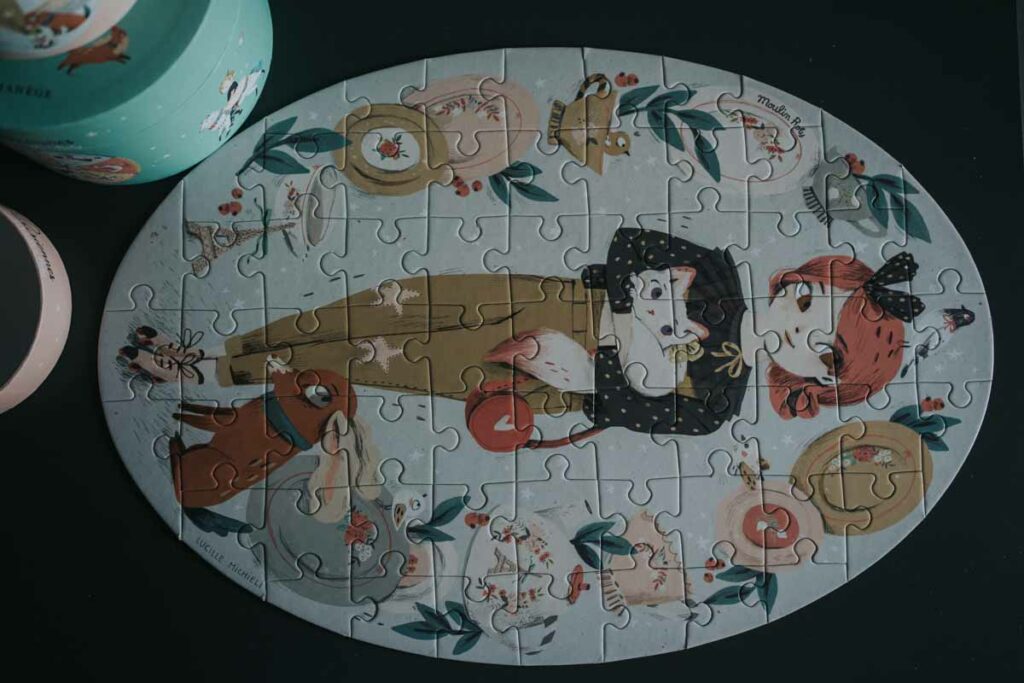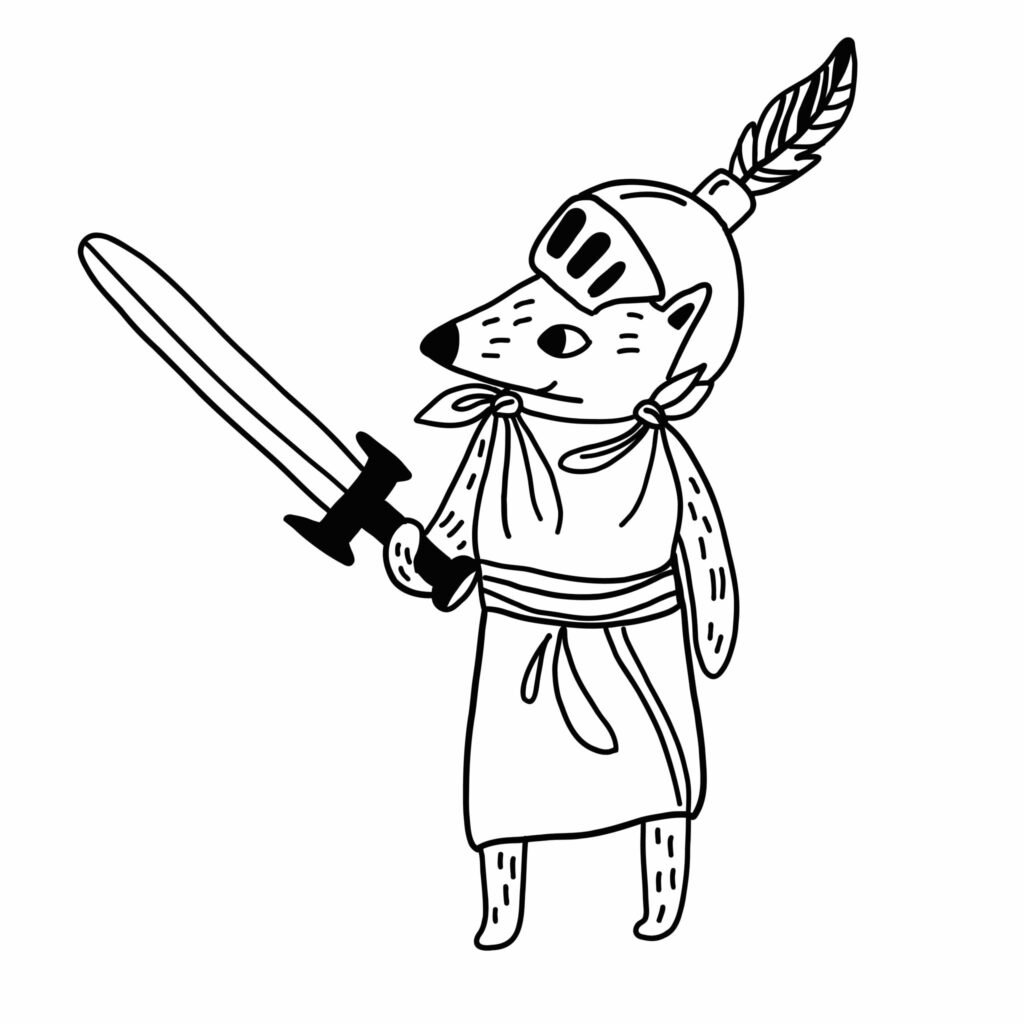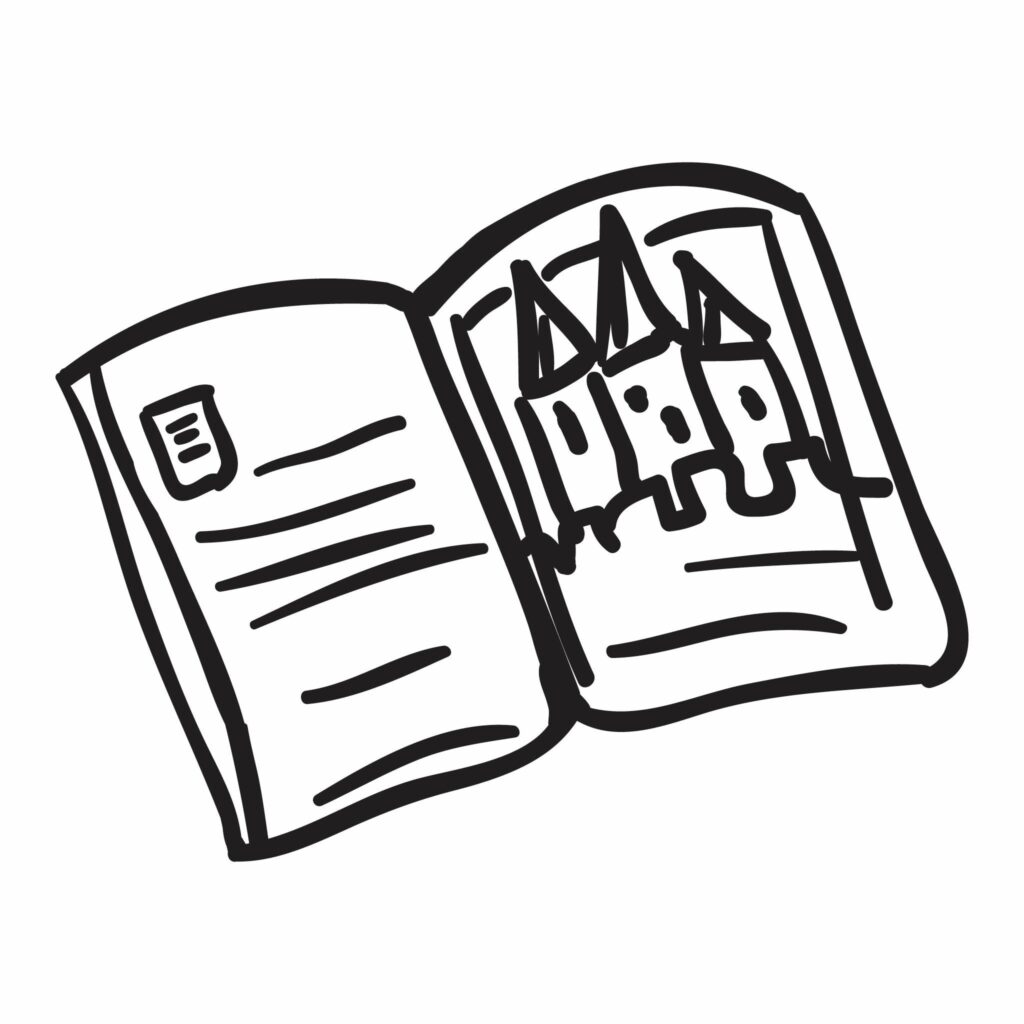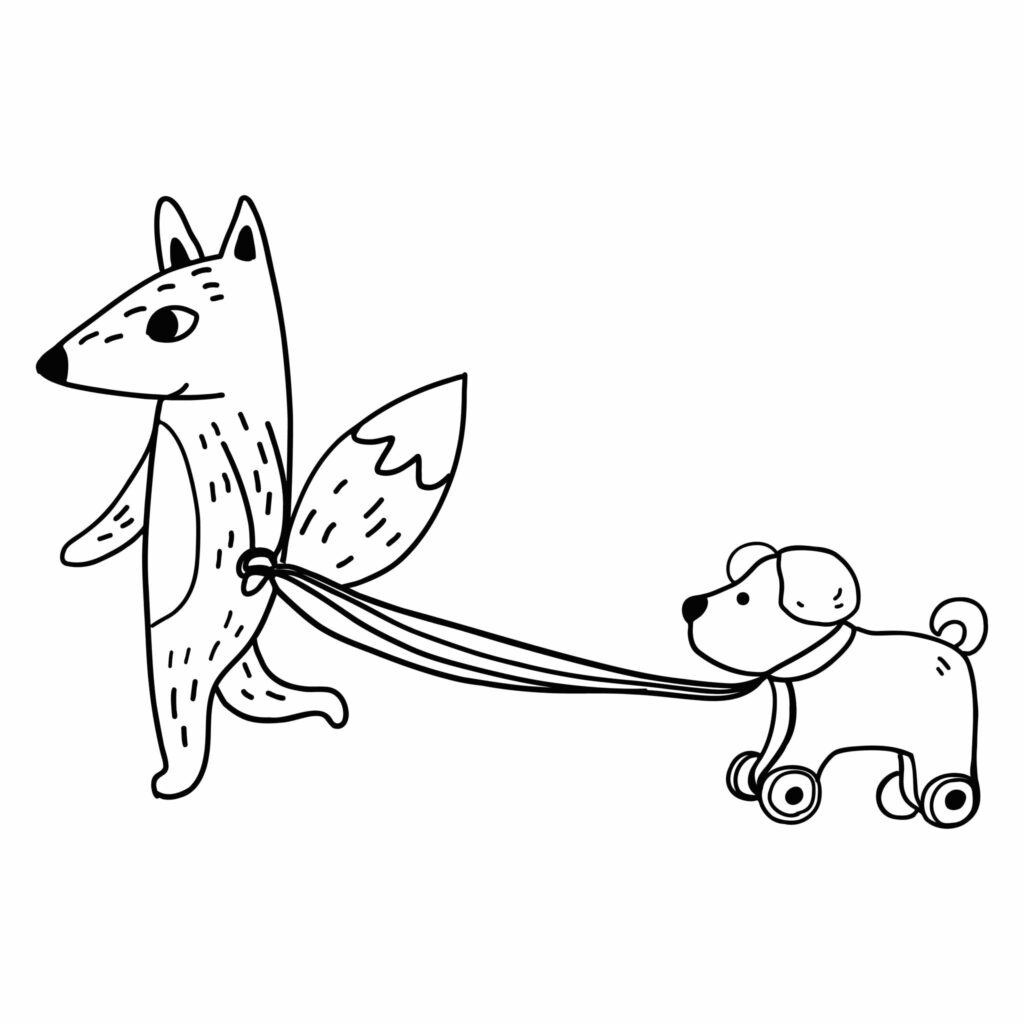What’s so special about puzzles?
Why are they such a perennial classic, a winning gift that every child is happy to receive?
They are the antithesis of open-ended play, the approach that we champion here at 100 Toys. And yet they have a unique magic that captivates children for long stretches of time. What’s their secret?
Quite simply, puzzles are good for you.
In this guide, we’ll show you the best puzzles to choose for your child and examine the important skills they foster.
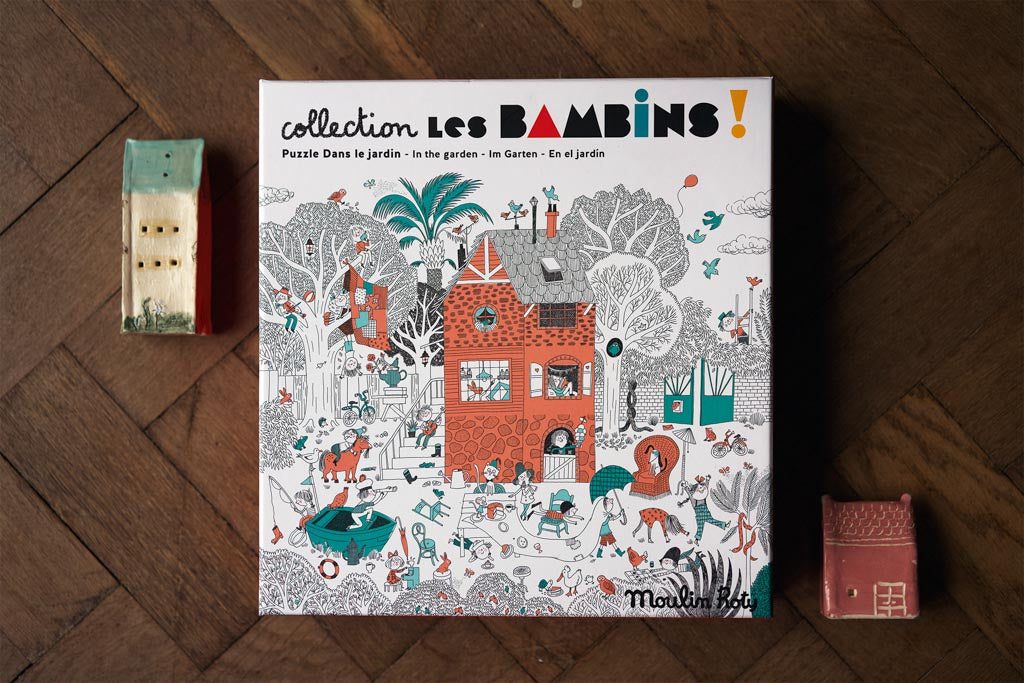
Why are puzzles good for children?
Puzzles work on so many levels, from problem solving and developing fine motor skills, to hand-eye co-ordination and concentration. And they vanquish the problem of the bored child pining for a playmate. Quiet, independent time completing an age-appropriate puzzle gives children a vital sense of achievement and channels their attention during long, restless afternoons.
Likewise, sharing a puzzle with your little one can be a nice transitional activity after a busy day at nursery where they (and you) need some reconnection time but they perhaps aren’t in the mood for answering questions about what they’ve been up to that day. You may also find that conversations flow more freely when the ‘pressure’ to answer questions has eased up a little.
Feeling confident in their abilities and knowing they can successfully complete things is important because it gives them courage to try new activities they might otherwise avoid for fear of failure. On a secondary level, puzzles with illustrations, characters, and words, can help to build knowledge around particular topics. From farmyards and French, to colours, numbers, and shapes, they are a great way to develop natural discussions.
When choosing your jigsaw or puzzle, the most important thing to remember is that it should be age- and (more importantly) skill-appropriate. Providing a child with a puzzle that is too easy and you risk them becoming bored and they fail to be stretched, whereas trying to tackle a puzzle that is too far beyond their current capabilities can result in frustration and feelings of failure.
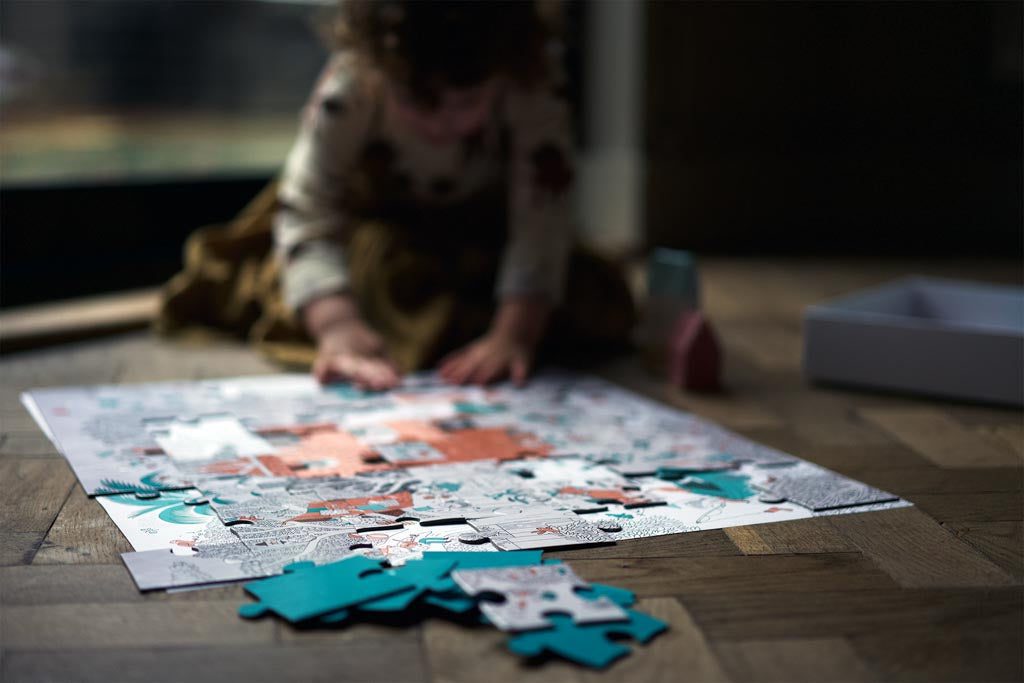
The benefits of playing with jigsaw puzzles
Perseverance and task completion
“But my child can’t concentrate for longer than a minute!”
This isn’t true. I bet they could sit in front of the television or play an app for hours.
Concentration isn’t the problem. You have to start with the child. If you choose correctly, the puzzle will present just the right level of challenge. This increases focus just as surely as picking something too easy or hard will destroy it.
Learning to pay attention is a superpower, as is seeing a task through to the end. With open-ended play, you can stop at any point and declare your creation ‘finished’. But with a puzzle, your success (or failure) is self-evident.
All children (and adults!) can concentrate for differing amounts of time – completely normal! Bear in mind that a 3-year-old may only be able to concentrate on a task for around 5-15 minutes, whereas a four-year-old may manage up to 20 minutes. Follow their lead, if they are getting restless and losing interest then it is time to move on. Or the chosen puzzle isn’t age and skill appropriate and isn’t capturing their attention.
Sorting and classifying
Start by finding all four corners and gather all the edge pieces. Group the remaining pieces by colour: the blue sky pieces in one pile, the green grass pieces in another. Sorting is a vital skill and puzzle play is a great way to hone it. This piece is part green, part blue, but it also has a straight edge. Does it below in the grass, sky or edge pile?
For babies, who are too young to tackle a traditional jigsaw, shape sorters offer many of the same benefits.
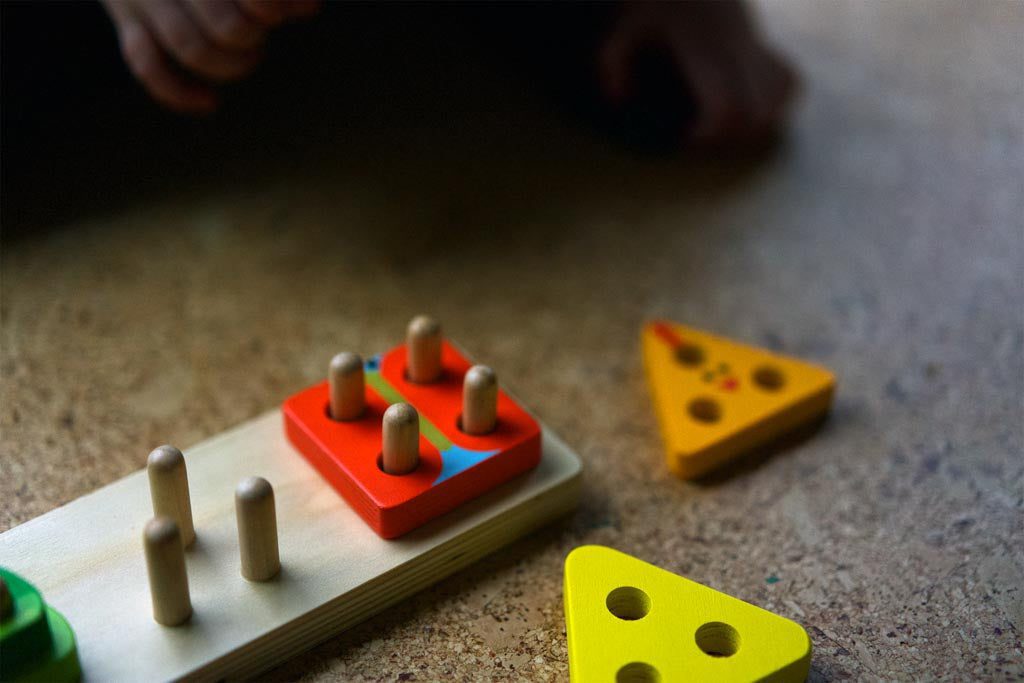
Fine motor development
It takes time for young children to develop fine motor control. Gross motor movements (running, swinging, throwing, dancing…) are vital to ensure fine motor control develops in turn and like with gross motor we need to provide an enabling environment. Opportunities to strengthen the muscles and joints in young hands which will enable them to function well in nursery or school and to use a pencil and scissors effectively. The fiddly jobs that we as carers assume our little ones cannot do for themselves are often the most useful methods of strengthening their fine motor skills. Pulling up their own zips on their coats or letting them help pour their own drinks from a jug for example. Puzzles come into their own here, appealing to look at, tactile to hold and offering the right level of challenge for little hands to have a go at picking up the pieces and moving them around until they fit, offer help and support if and when they need it.
Subject knowledge
Is your toddler interested in animals? Lovely language-rich opportunities to teach farm animal names through topic-related puzzles. Exposure to new words directly impacts on the vocabulary they eventually use themselves, so talk about what you can see as you are completing a puzzle together. Can they name the animals, shapes, colours once the puzzle is complete? I often like to provide a running commentary so instead of constant questioning such as “how many trees are there?” (which is fine in small doses), try simply commenting – “Oh I can see 3 trees there!”
Spatial reasoning
Developing spatial reasoning takes many forms. From dodging their friends whilst running around a playground, to crawling through a long tunnel without hitting the sides, or by trial and error when attempting to roll a ball through a tube that is too narrow. Your child is developing their awareness of where they are in space. As their spatial awareness develops, they gradually learn to do this in their head and use their eyes to see which objects and shapes can be moved to fit together. Puzzle play greatly improves the spatial awareness of those children that spend time completing puzzles than those that don’t have the opportunity.
How do you teach a child to do puzzles?
The best way is by letting them explore and through trial and error. Use simple verbal strategies like “start with the corners and edges”; “group all the pieces of one colour together”
For younger children, your role here is to scaffold and support their learning by being on hand and making suggestions as they explore shape sorters and simple puzzles. Use language such as “turn”, “next to” …
Try sitting on your hands if you find yourself trying to ‘do it for them’, exploration of shapes and spatial reasoning is key here. Practice makes perfect!
Recommendations
Here are some puzzle suggestions, broken down by age. The categories aren’t set in stone. A ten-month-old with a lot of puzzle-completing experience and fine motor control may well be happy to tackle something more challenging.
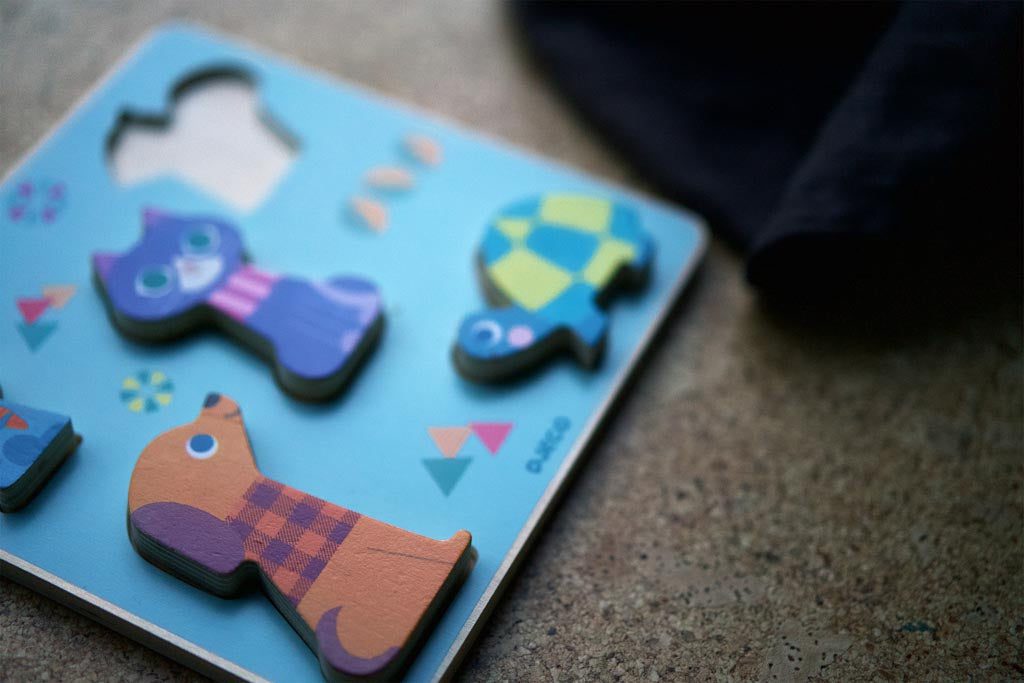
Puzzles for babies
Can babies really do puzzles? Yes – but before tackling traditional puzzles, babies need the gross- and fine-motor control to put one object inside another. Posting anything to hand into the nearest hole is a great first step (unless it’s your car keys!). They also need the spatial awareness to aim the puzzle piece at the hole and to make sure it’s facing the right way.
Start with a knobbed puzzle. Simple circles are easiest as they have 360-degree rotational symmetry. This means that a circular puzzle piece will fit whichever way round you try. Squares have four-way rotational symmetry – there are four possible orientations that will work. A triangle only works three ways and so it is even more difficult.
Knobbed puzzles are best because they give your child something to grip. Puzzles without handles are fine for babies but should not be their first experience as they require a little more fine motor control. Try Djeco’s Bigabasic, a circular knobbed puzzle before progressing to Formabasic, which adds triangles and squares.
Next comes Boitabasic shape sorter puzzle – more difficult as your baby will have to choose the correct face to fit the gap. This one bridges the gap to toddlerdom.
A special mention here goes to Grapat Bowls and Balls. They work in the same way as a circular puzzle, helping with placing and positioning, as well as being very tactile. And if your baby is discovering object permanence, they will delight in using the bowls to hide and discover.
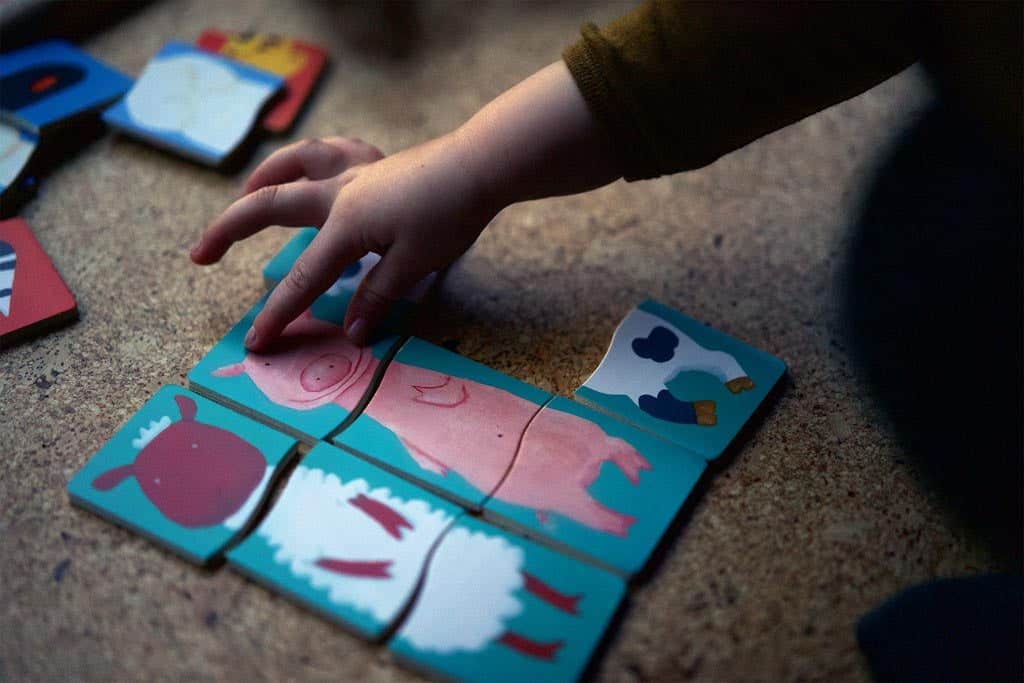
For toddlers
Now they have developed their pincer grip they’re ready to handle the pieces with more control and to orientate them correctly. This is the age of the shape and farmyard puzzle.
Next come two- and three-piece puzzles, for example where you put together the front and back of an animal. Gradually building up to four-piece puzzles and beyond. Puzzles for toddlers usually have straight or wavy lines and are simple to connect.
Djeco Puzzle Coucou Cow – a delightful traditional wooden tray puzzle which promotes language and manual dexterity
Haba My First Puzzles – a set of 5 different 2-, 3- and 4-piece puzzles of pets. Great progression for when your child has mastered 2-piece puzzles and are working towards connecting more pieces.
Moulin Roty animal puzzles box – 10 piece, brightly illustrated puzzles for your older toddler to complete, the images present great conversation starters and to stimulate observation skills. Simple wavy lines ensure the pieces slide together with ease.
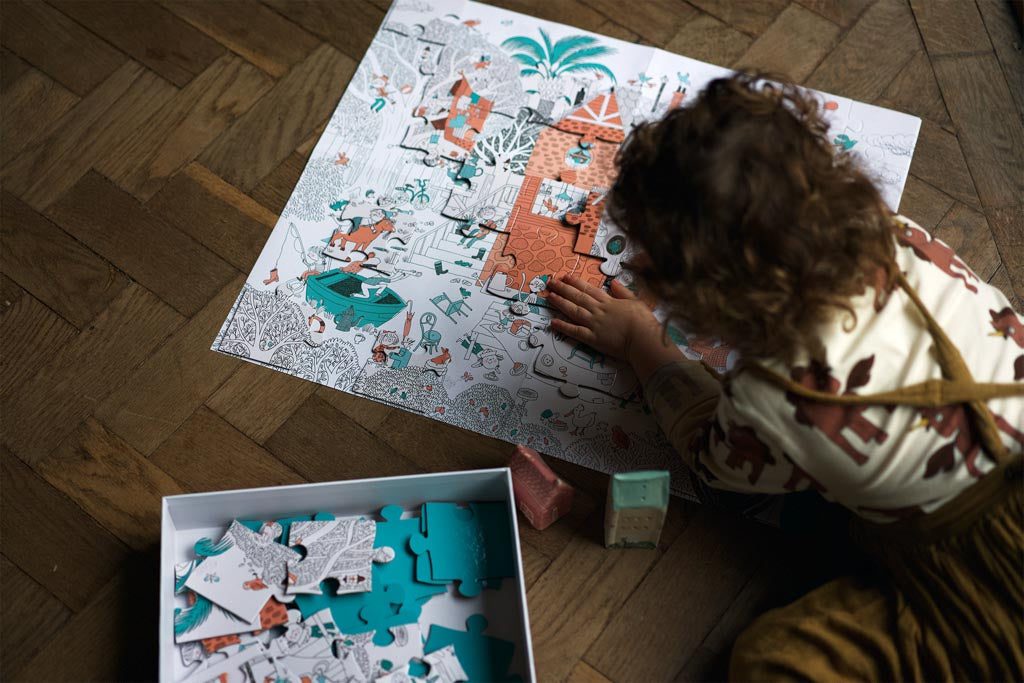
Puzzles for preschoolers
Children of this age often struggle with the concept of something (themselves, their home, their own family) as being part of a bigger picture. A single puzzle piece can demonstrate how a small part can be added to another to make something bigger. Once your child is mastering the concept of ‘connection’ they will likely show an interest into other areas of play where they can practise connecting (and disconnecting) items such as duplo and lego bricks. This is where their older siblings may start complaining of their towers being knocked down! If your child is showing an interest in play that is involving connecting then think about providing other opportunities to satisfy the connecting schema. They may also enjoy sticking with tape, glue, magnets. Or even putting two pieces end-to-end like wooden blocks.
eeBoo Beautiful world puzzle – determination is needed by your pre-schooler to complete this beautifully illustrated puzzle. Show them that it’s best to start with the corners and then find the pieces with straight edges and a four-year-old may surprise you and happily complete a 100-piece puzzle independently. A lovely opportunity to work as a team too and develop their social skills if a sibling or friend wants to play alongside. Sit back and enjoy that coffee!
Grimms Puzzle square
And don’t forget that puzzles are not just jigsaws. You can branch out and explore three-dimensional challenges such as a Grimm’s rainbow or puzzle square.
Are you ready for school?
Do you have a preschooler? Would you like them to develop some key skills before starting school? How wonderful to go into school on that first day feeling like you belong.
Get Set Five is a year-long course full of fun and free activities to do with your child.
Simple ideas for puzzle storage
A common frustration can be how to store puzzles. Although there are ready made storage systems available to buy there are loads of free or cheap ways of storing them so that they remain intact. There is nothing worse than discovering a missing piece right at the end!
Inexpensive clear zip lock plastic bags can provide a very simple and effective way of storing the wooden base board and loose pieces, and your child can easily see which jigsaw it is without the need to tip out all the pieces first. Although this is part of the fun!
An old, lidded tub makes a good vessel to house loose puzzle pieces, even better if you can take a photo of the contents and print and cover the tin with the image.
Baskets – try displaying the wooden base of the puzzle on a low shelf with the contents tipped into a basket and strategically place the two elements on clear display. An ‘unfinished’ puzzle often invites the finder to complete it!
Top tips
Lost a puzzle piece? Recreate one (or even better if your child has a go) using a piece of cardboard and drawing the missing image on
SIT ON YOUR HANDS! Don’t rush in and do it for them, give them time
Create a renewed interest if your little one hasn’t played with an old favourite in a while by wrapping the pieces up in tinfoil for them to unwrap – my daughter absolutely loves doing this
Final word
The carefully selected puzzle that fits the need of the child is vital for building upon previous skills and developing them further. If the puzzle is too easy then there is no growth and if too hard then the child becomes frustrated and disinterested. Support your child along the way and watch with pleasure when they can suddenly master it for themselves.
“What a child can do in cooperation today, he can do alone tomorrow.”
Lev Vygotsky, Developmental Psychologist

